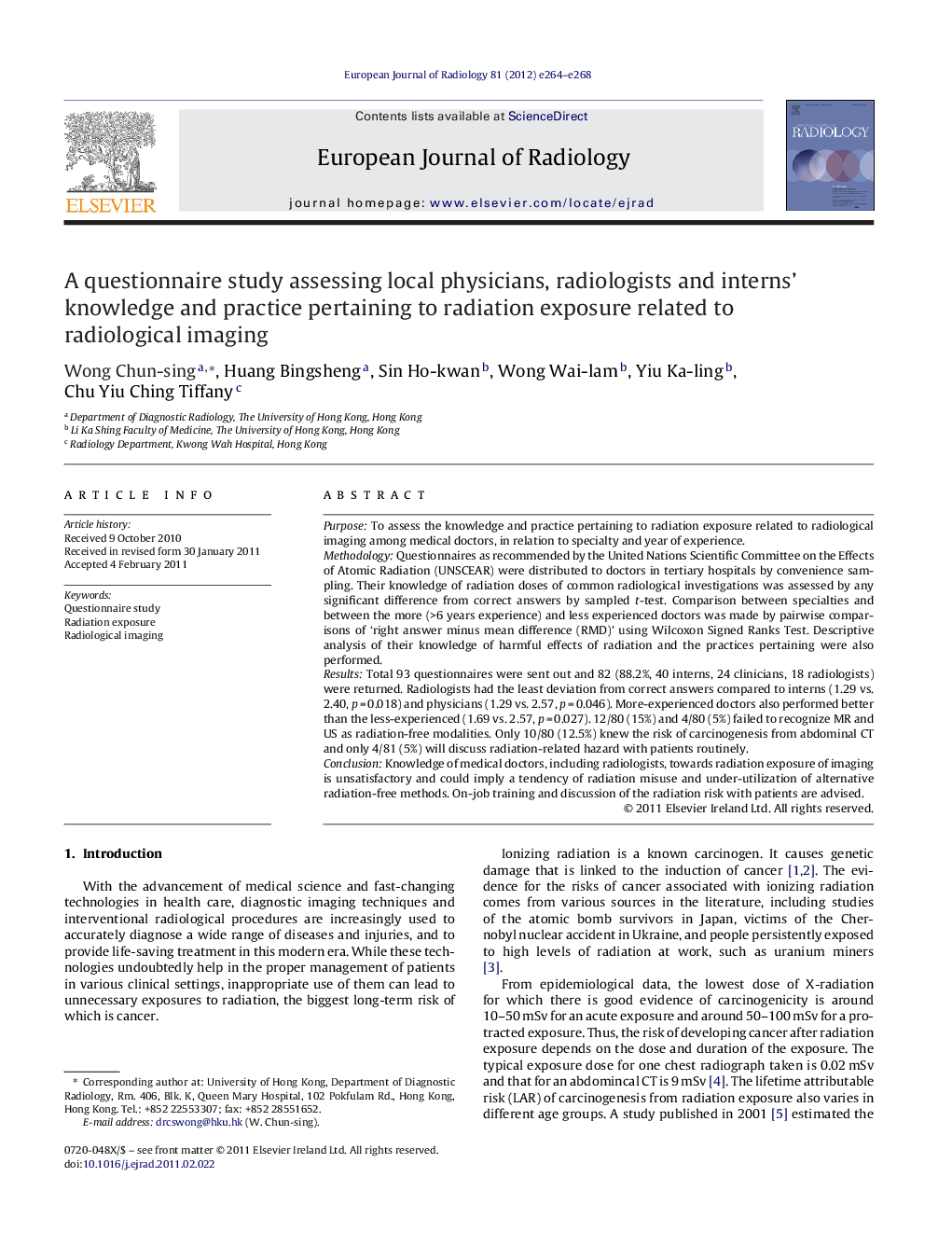| Article ID | Journal | Published Year | Pages | File Type |
|---|---|---|---|---|
| 4226476 | European Journal of Radiology | 2012 | 5 Pages |
PurposeTo assess the knowledge and practice pertaining to radiation exposure related to radiological imaging among medical doctors, in relation to specialty and year of experience.MethodologyQuestionnaires as recommended by the United Nations Scientific Committee on the Effects of Atomic Radiation (UNSCEAR) were distributed to doctors in tertiary hospitals by convenience sampling. Their knowledge of radiation doses of common radiological investigations was assessed by any significant difference from correct answers by sampled t-test. Comparison between specialties and between the more (>6 years experience) and less experienced doctors was made by pairwise comparisons of ‘right answer minus mean difference (RMD)’ using Wilcoxon Signed Ranks Test. Descriptive analysis of their knowledge of harmful effects of radiation and the practices pertaining were also performed.ResultsTotal 93 questionnaires were sent out and 82 (88.2%, 40 interns, 24 clinicians, 18 radiologists) were returned. Radiologists had the least deviation from correct answers compared to interns (1.29 vs. 2.40, p = 0.018) and physicians (1.29 vs. 2.57, p = 0.046). More-experienced doctors also performed better than the less-experienced (1.69 vs. 2.57, p = 0.027). 12/80 (15%) and 4/80 (5%) failed to recognize MR and US as radiation-free modalities. Only 10/80 (12.5%) knew the risk of carcinogenesis from abdominal CT and only 4/81 (5%) will discuss radiation-related hazard with patients routinely.ConclusionKnowledge of medical doctors, including radiologists, towards radiation exposure of imaging is unsatisfactory and could imply a tendency of radiation misuse and under-utilization of alternative radiation-free methods. On-job training and discussion of the radiation risk with patients are advised.
